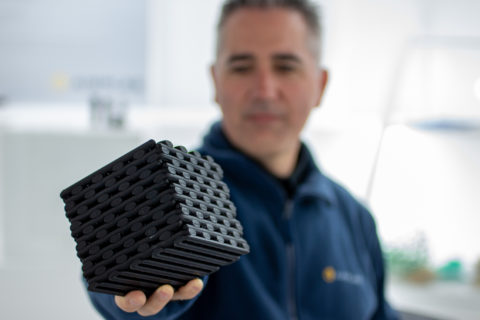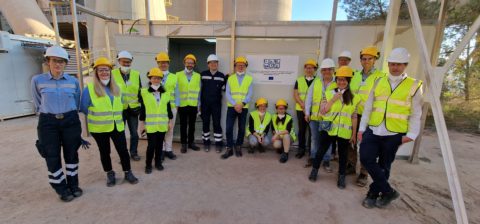The CARMOF hybrid pilot plant to capture up to 350 tonnes CO2/year, fully operational in TITAN cement facilities in Athens
Coordinated by AIMPLAS, the European CARMOF project has come to an end, achieving CO2 recovery values higher than 80% and a purity higher than 96% from a flue gas (14% CO2) in this pilot plant in Greece.
The pilot plant is today the only one hybrid platform able to test different membrane and sorbent material configurations, allowing to increase the knowledge about hybrid plants performance in real industrial environments.

The decarbonization of the economy is one of society’s main challenges, as described in SDG 13 of the United Nations Global Compact. To meet this challenge, AIMPLAS, the Plastics Technology Centre, coordinates the European CARMOF project, which aims to develop efficient industrial carbon capture technologies that help reduce greenhouse gases emissions, which produce global warming.
After 5 years of work, the project has recently come to an end and the CARMOF hybrid pilot plant, able to capture up to 350 tonnes CO2/year, installed at TITAN cement plant facilities in Athens (Greece), is fully operational. The plant is achieving CO2 recovery values higher than 80% and a purity higher than 96% from a flue gas (14% CO2). This pilot plant is today the only one hybrid platform able to test different membrane and sorbent material configurations, allowing to increase the knowledge about hybrid plants performance in real industrial environments.
When the project started in January 2018, carbon capture was inefficient due to the high power consumption required by the process. Since then, the CARMOF project has worked on the construction of one pilot plant based on hybrid technologies to capture CO2 in an efficient way. This solution consists of the synergic combination of a membrane unit where to concentrate the CO2 and a VPSA (Vacuum and Pressure Swing Adsorption) unit, fed from the retentate of the membrane. Taking the best of both technologies, and minimizing their weaknesses, it is possible to achieve better recovery and selectivity values than either one by itself.
The project has received funding from the EU’s H2020 Framework Programme for Research and Innovation under grant agreement number 760884. A total of fifteen partners from nine countries took part in the project.

